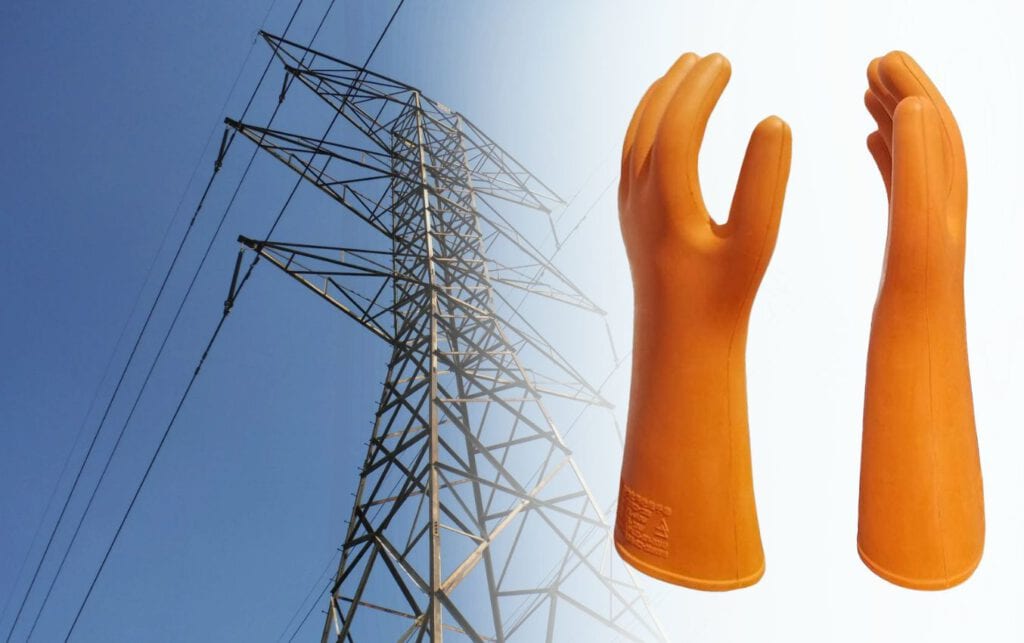Nitrile gloves are widely used in various industries due to their excellent protection against chemicals, cuts, and abrasions. They are also effective in protecting against infections and bloodborne pathogens in medical settings.
Table of Contents
- Why Electricians Need Electrical Gloves for Hand Protection
- Latex gloves protect against electric shock.
- Nitrile Gloves: Conduct Electricity Explained
- Nitrile Gloves for Electric shock: How Effective?
- The Limits of Nitrile Rubber Gloves in Electrical Work
- Can Nitrile Gloves Protect Against High Voltage?
- Are All Nitrile Gloves ESD Gloves?
- How To Store & Inspect Your Insulating Glove Gear?
- Final Words : Do nitrile gloves prevent electric shock
- Related Posts
However, when it comes to high voltage protection, nitrile gloves have limitations.
Do nitrile gloves conduct electricity?
As we continue to navigate the pandemic, nitrile gloves have become an essential personal protective equipment (PPE) for many of us. They have proven to protect against harmful pathogens and provide a physical barrier between our skin and external contaminants. However, some professionals also wonder whether nitrile gloves can protect against electric shock. In this blog post, we will explore the science behind electric shock and the effectiveness of nitrile gloves in preventing it. So, if you work in an industry where electric shock is a concern, keep reading to find out if you should wear nitrile gloves.
Why Electricians Need Electrical Gloves for Hand Protection
Being an electrician is a dangerous job, and it is important to fully protect yourself, especially your hands because they are the first to touch an electric current. Gloves made from natural rubber latex are the preferred choice to protect against hazardous electrical sparks, as they are designed to protect against electrical hazards.
However, gloves made from natural rubber latex are inherently static insulation, holding on to a charge and releasing it in an uncontrolled manner. That is why it is essential to choose the proper gloves for the specific task.
Nitrile gloves will protect against contact, but they may experience electrical breakdown in 400V environments easily. Therefore, it is necessary to use proper high voltage gloves or clean dry hands when working with electrical.
Choosing the right gloves means ensuring adequate protection and reducing risks, making it a crucial factor in being a safe and responsible electrician.
Electrical Work Gloves
Latex gloves protect against electric shock.
Nitrile rubber does not conduct electricity. It can protect people from electric shock if they are in a certain place, but it is not good for other uses. Nitrile gloves can offer protection against low voltages, but they can be easily punctured, compromising their insulating properties.
For instance, defibrillators can produce 1000–5000 volts, and ordinary residential and light commercial mains are 240 volts or fewer. Disposable nitrile gloves may provide some protection for these voltages, but only if they remain physically intact.

Buy Best Latex Gloves for electric shock at Amazon.com
Nitrile Gloves: Conduct Electricity Explained
Nitrile gloves have become a popular choice for hand protection, especially in industrial and medical settings due to their properties such as resistance to chemicals and punctures. Additionally, nitrile gloves are known for their strong electrical resistance, making them a good option for use as an insulator against electric shocks.
However, it is important to note that nitrile gloves are not perfect and have their limits when it comes to electrical work. If working in a 400V environment, for example, nitrile gloves can experience electrical breakdown. It is always important to use the proper hand protection for the job at hand. For electrical work, it is usually best to wear rubber gloves.
Nitrile Gloves for Electric shock: How Effective?
Nitrile gloves are a popular protective gear for electricians as they provide good electrical insulation. However, the effectiveness of nitrile gloves in electrical work depends on several factors. The type of voltage and the duration of exposure are important considerations. Although providing minor protection from a hundred volts, nitrile gloves may experience electrical breakdown in 400V environments.
To ensure complete protection, electricians opt for premium nitrile gloves with additional coatings for extra insulation. Although not a substitute for rubber insulating gloves, nitrile gloves can provide an added layer of protection during electrical work. It is important for electricians to understand the limits of nitrile gloves and to use proper hand protection for the specific electrical hazards they face.
The Limits of Nitrile Rubber Gloves in Electrical Work
Despite its strong electrical resistance, nitrile gloves have limitations when it comes to electrical work. While they can provide some protection against low voltages, they may not be sufficient for higher voltages.
Additionally, nitrile gloves may not be suitable for tasks where electrostatic discharge (ESD) can cause harm or damage. It is important for electricians to carefully assess the risks involved in their work and choose the appropriate hand protection.
While nitrile gloves may be a practical choice for some tasks, higher-risk tasks may require specialist ESD gloves or rubber insulating gloves. Ultimately, it is vital for electricians to prioritize their safety and choose the appropriate hand protection for the job at hand.
Can Nitrile Gloves Protect Against High Voltage?
Nitrile gloves are a popular choice of protective gear in several industries. While they provide excellent protection against physical hazards, electrical hazard protection is one area where they need to be used with caution.
Nitrile is a non-conductive material and can protect against contact voltage up to a certain level. However, when it comes to high voltage environments, nitrile gloves can experience electrical breakdown with ease.
Therefore, it is important to ensure that electricians and other professionals working in high-voltage environments use the right type of protective gear to avoid injury. Rubber insulating gloves are a preferred choice to protect against electrical sparks, whereas nitrile gloves are more suited for other types of work safety equipment.
As with any protective gear, it is important to choose gloves that meet the required electrical safety standards for the job at hand.

Are All Nitrile Gloves ESD Gloves?
Nitrile gloves, made from synthetic latex, are highly recommended for workers handling electronic equipment. They are durable, puncture-resistant, and inherently anti-static, making them suitable for various applications.
However, not all nitrile gloves are ESD-safe. It is crucial to ensure that the gloves chosen are explicitly designed for electrostatic discharge (ESD) protection. Alongside nitrile gloves, other ESD-safe options include vinyl, latex, and fabric gloves, depending on the specific use case.
Therefore, when working with electronics, it is essential to select gloves specifically designed for ESD protection to ensure operational safety and to prevent damage to the equipment.
How To Store & Inspect Your Insulating Glove Gear?
It’s important to store and inspect your insulated glove gear in a safe and reliable way so that you can keep them working optimally. Here are some tips to help you out:.
- Store gloves in a cool, dry place where they can be easily accessed.
- When not using them, carefully remove all batteries and other metallic objects from the gloves so that they are not exposed to any potential sparks or currents.
- Always wear protective eyewear when handling insulated gloves – even if only for brief periods of time.
- Test your insulated gloves regularly to make sure that they’re still effective in protecting you from electric shock. This could include conducting tests with an AC voltage or current, measuring resistance levels, or checking for leaks (although this last test is usually the easiest).
- If your insulated glove gear begins to fail – either because it’s damaged or because it’s no longer effective – replace it as soon as possible before it presents any further danger or risk to your safety or the safety of others in the area.
Final Words : Do nitrile gloves prevent electric shock
While nitrile gloves can provide some protection against electric shock, they are not suitable for high voltage applications. Rubber insulating gloves specifically designed for electrical work should be used to ensure adequate protection against high voltage hazards.
Always follow safety guidelines and use appropriate personal protective equipment when working with electricity or electrical devices.






